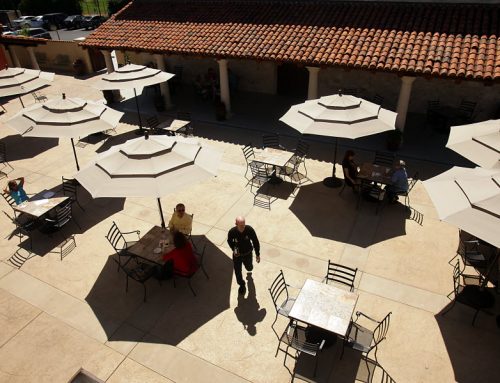As a June baby, I have a particular affinity for garden parties. Sitting outdoors in my garden, where I am usually weeding and digging and pruning, is a rare event. Throw in a few friends and a sweet treat or two, and I am in heaven.
This June, for the first time in many years, I will be not throwing a garden party for my birthday. I’ll be back in Philadelphia with my family.
 As a gift, I am leaving behind a recipe for a Classic Genoise Cake from Queen of the Sweet Kitchen Cathy Burgett, chef-instructor for the Santa Rosa Junior College Culinary Arts Program. I baked it last year, then slathered it with whipped cream and fresh berries.
As a gift, I am leaving behind a recipe for a Classic Genoise Cake from Queen of the Sweet Kitchen Cathy Burgett, chef-instructor for the Santa Rosa Junior College Culinary Arts Program. I baked it last year, then slathered it with whipped cream and fresh berries.
“This is probably the most important cake in a cake baker’s repertoire,” Burgett writes. “The cake gets most of its personality from the imbibing syrup, which is used to flavor and moisten it … Genoise is a paradox: it is fragile to mix and bake, but once cool, you can practically play Frisbee with it, and it won’t fall apart.”
You’ll need a 9-inch cake pan and an electric stand mixer.
Classic Genoise Cake
Makes 1 cake with 12 to 16 servings
¾ cup cake flour
4 eggs
2/3 cup granulated sugar
4 tablespoons butter, melted and cooled
½ teaspoon vanilla extract
Preheat the oven to 350 degrees. Butter a 9-inch round cake pan and line the bottom with parchment paper cut to fit. Butter the paper and dust the whole surface of the pan with flour. Tap out any excess flour.
Sift the cake flour onto a sheet of parchment paper or onto a plate.
Put the eggs and sugar in the bowl of an electric mixer. Choose a pot that is slightly larger than the mixing bowl, fill it with water and bring to a simmer on the stove.
Set the bowl of eggs and sugar over the pot of simmering water and whisk gently. Keep stirring for a few minutes until the mixture is quite warm and the sugar has dissolved.
Place the warm mixture in the bowl on the machine, and whisk at the highest speed until it is light and tripled in volume. The batter should be thick enough to sit on top of itself when the whisk is lifted out of it.
Remove the bowl from the machine. Sift the flour over the batter. Using a long-handled rubber spatula, fold it in lightly, using a few strokes as possible. Keep turning the bowl and lifting up the batter with the spatula. Add the butter and vanilla when the flour is almost completely mixed in and fold quickly. The batter quickly loses volume after the butter is added so be careful not to overfold.
Pour the batter into the prepared cake pan and gently tap it once against the work surface.
Bake on the open rack in the middle of the oven for 20 to 30 minutes.
The cake is done when it springs back when lightly touched with a fingertip, or a cake tester comes out completely clean.
Remove the cake from the oven and immediately run a small knife around the sides of the warm pan to loosen the cake. Press the knife against the pan, don’t chop with it or you will gouge the sides of the cake.
Place a cardboard circle or cake rack on top of the cake and turn it over. Turn the cake back over onto another rack, and cool it completely before assembling it. This cake can be kept for two days, well-wrapped at room temperature, or frozen for up to 2 weeks.
Variations: For the vanilla extract, you could substitute the grated zest or 1 lemon or 1 orange; 1 teaspoon orange flower water or rose water; or ½ teaspoon almond extract.


